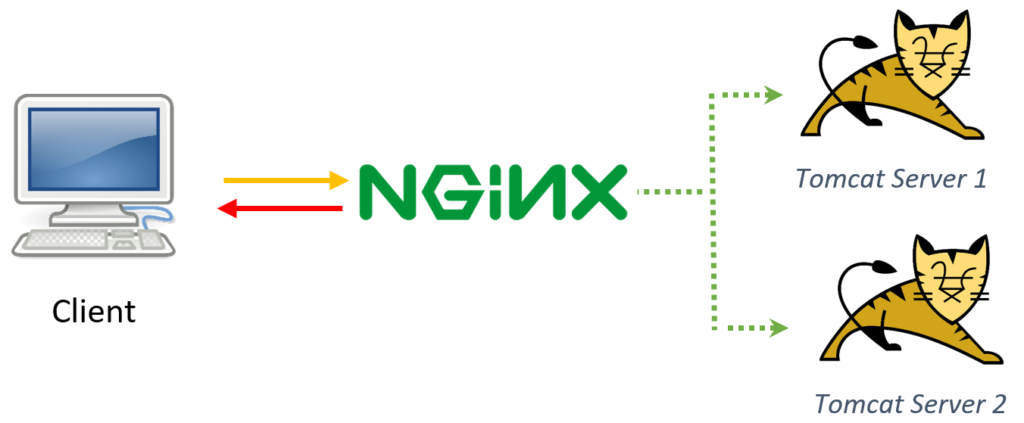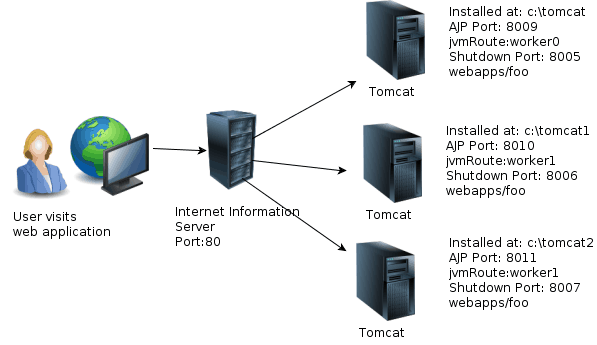
- Apache tomcat load balancing how to#
- Apache tomcat load balancing install#
- Apache tomcat load balancing zip#
Within this you should see the docBase path. To do so, open /m-power/tomcat/conf/server.xml in a text editor, and look for line 103 (or do a CTRL + F search for ‘ section. The last step in setting up your clustered environment is to make each Tomcat aware of its worker number. Make sure to customize the path to the workers file based on your specific installation of Apache. JkWorkersFile "C:/Program Files (x86)/Apache Group/Apache2/conf/workers.properties" Add the following lines to the Dynamic Shared Object section of the configuration file: LoadModule jk_module modules/mod_jk.so Next, open \Apache Group\Apache2\conf\nf in a text editor. worker1) will be used to connect back to your Tomcat installation. Keep track of your naming system for each individual worker, as these names (i.e.
Apache tomcat load balancing how to#
For more information on how to customize this file, please see this page. Note that you can use as many Tomcat instances as you like. You will need to create a workers.properties file, that will be saved in /Apache Group/Apache2/conf/.
Apache tomcat load balancing zip#
After downloading the zip file, extract the contents, and copy the mod_jk.so file into /Apache Group/Apache2/modules.
Apache tomcat load balancing install#
Once you have verified that Apache can start, you will need to download and install Apache’s load balancing module. You may need to change either Apache or your production Tomcat to use a different port. By default, Apache will attempt to use port 80, the same default m-Power port for production. After you have installed Apache, make sure that the service can start. Click here to navigate to the Apache website to download the installer.

Now you will need to download and install the Apache HTTP Server. You may want to write down these port numbers– you will need them to configure Apache.

Make sure that nothing else is using this port, and feel free to change this port if necessary. This is the port number the clustered server will call.

This should show you the AJP connector port. Look at line 91 (or do a CTRL + F search for ‘Define an AJP’). With a simple re-login the user is still able to run their applications as normal.įor each Tomcat instance you have, navigate to /m-power/tomcat/conf/, and open the server.xml file in a text editor. Additionally, if one Tomcat server goes down, the traffic is routed elsewhere. Load BalancingĪ load balancing environment will automatically route traffic to the separate Tomcat servers to balance the workload. This document will describe how to setup a load balancing and clustered m-Power environment on a Windows server. There are two main steps in setting up a load balancing Tomcat environment– configuring m-Power, and configuring Apache HTTP. For instance, developers and m-Power administrators can safely restart individual Tomcats without bringing down an entire production instance, as well as memory and resources are better balanced. Clustering/Load Balancing Tomcat has many performance implications within a production environment.


 0 kommentar(er)
0 kommentar(er)
